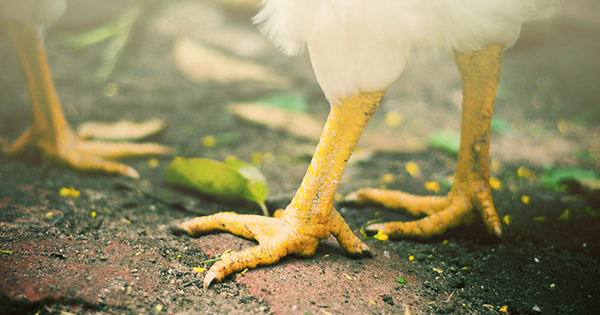
The chickens are laying again after their winter vacation. The flock of four in our back yard never stopped entirely, but there was a slowdown around the holidays. Who can blame them? Now the light is coming back so rapidly, it’s noticeable each week. Last week was the first time in months that it was light out when I left the house to drop my daughters off at school. Now the sun can be bright and even warming at five p.m. Our hens benefit from these longer days too. The three or four eggs we get each day have delicious dark yolks the color of tropical sunrises.
Our birds are Barred Rocks, handsome black-and-white striped chickens with bright red combs. They were originally bred in New England in the 19th century and are hardy even in the cold. People are often surprised when I tell them we don’t heat our coop in the winter. A submerged heater keeps their water from freezing, and a light hooked up to a timer regulates the day length. But otherwise the girls make do.
With all of the recent rain and warm weather, however, the chicken pen has become a mud wallow. So I’ve let them range around the yard, where they’ve scratched any piece of ground not tightly grown in grass into black patches of dirt. It’s a bit unsightly. Today I’ll open the back-yard gate and try to rush them out into the side yard. The “side yard” is not a yard at all, but nine wild acres belonging to people who live out of state that is an expanse of fern hummocks and creek drainages, tangles of alders and scattered spruce. Seems like it would be heaven for chickens. I think of them wandering off to explore this vast topography, climbing in and out of gullies, roosting on alder boughs, meeting up with moose and magpies.
But these girls aren’t particularly adventurous. Even when free to wander, the hens typically huddle just on the outside of our fence or scratch around our gravel driveway. Occasionally we’ll get a call from our downhill neighbor letting us know that our chickens are in his yard.
Quite a few people keep chickens around town. Diagonally behind our lot lives a family with another flock. I hear their rooster crowing about 5:30 some mornings. It’s a bit bold, I think, to keep a rooster in town where the lots are barely larger than a quarter acre. Such is the live-and-let-live mentality around here, which can sometimes be a drag. Another neighbor burns coal—chunks of it wash out of the bluffs along area beaches. Nasty, sour-smelling coal smoke often wafts into our bedroom at night if we’ve got the window open. Perhaps one day there will be some rule against this. But Homer began as a coal-mining town, and many locals feel it’s their right to drive the shore to collect it and then to burn it.
I know I’m not grateful enough for the work our chickens quietly do around here: producing beautiful eggs, creating fertilizer I’ll compost and add to the garden, and turning our food scraps—which seem to have increased exponentially since having children—into something useful. Good hens make good neighbors.

